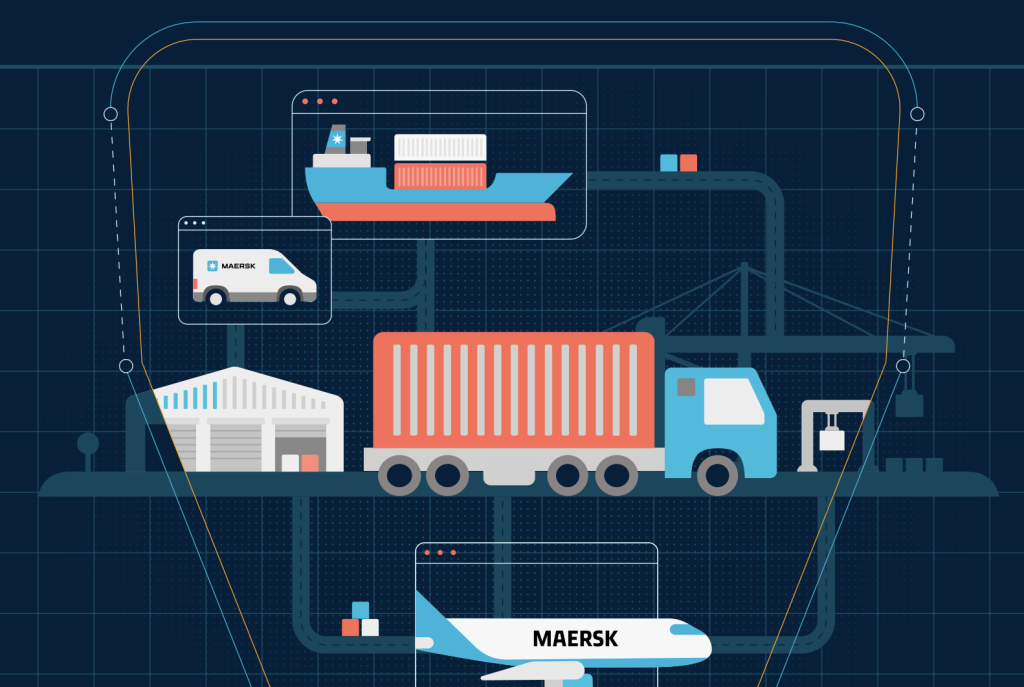In an ever-evolving global landscape, 2024 is expected to pose unique challenges and opportunities for the logistics industry.
According to the World Economic Forum’s Global Risks Report 20241, we are witnessing the emergence of a dual crisis of climate and conflict. Our increasingly fractured world must contend with an unstable global order, more extreme
weather events, accelerating technological change and economic uncertainty.
However, these challenges need to be understood in the context of supply chain resiliency, where logistics players can identify and develop customised strategies for the road ahead.
This Blue Paper delves into the megatrends and key supply chain risks at a global level, emphasising their relevance to APAC players. It aims to empower logistics players to weather the storm and thrive in uncertainty by outlining immediate actions and long-term strategies.
Where Does APAC Stand?
Even as the ever-changing shipping and logistics sectors weathered COVID-19, the subsequent economic recovery and succession of supply chain crises revealed that the global supply chain is prone to disruption.
Many logistics professionals are predicting no growth in the first half of 2024, and S&P Global’s 2024 outlook report states that supply chain resilience will remain key for this year. When taken with the hikes in sea and air freight rates in late 2023 due to geopolitical tensions, further crises might trigger another round of inflation in 2024, even as shippers come to terms with the many trade changes made in 2023.
APAC’s position in global trade at risk?
Fortunately, despite the global turbulence, APAC has the trade volume to weather the storm. Over the next decade, 70% of global growth will come from this region, which is also set to have the highest aggregate consumer expenditure by 2030. APAC is also where some of the world’s largest consumer markets are located.3
But while APAC leads global manufacturing exports overall and is the largest electronics supplier, it imports more than 25% of its energy resources and critical intermediate goods. China, for example, relies on Australia, Brazil, Chile and South Africa to supply 25% of the minerals for manufacturing inputs.
The region also relies on a smooth flow with partners in Eastern Europe, Central Asia, Latin America, the Middle East, North Africa and Sub-Saharan Africa to trade electronics, textiles and basic metals.Europe is APAC’s largest partner for pharmaceuticals and machinery, and APAC also supplies 12.75% of North America’s electronics imports.
Thus, while APAC has the resources to power through disruptions, it remains highly prone to the cascading effects of crises in other parts of the globe.
For instance, given that around 28% of the world’s container trade passes through the Suez Canal and the Red Sea, disruptions in these key routes can severely affect APAC trade.
In the next section, we will identify and discuss challenges specific to 2024 and how APAC-based logistics players can address them.
Implications for APAC-based Logistics Players
The impact of cascading global logistics challenges
The subsequent economic repercussions of the pandemic and various global conflicts have revealed the frailties of today’s global supply chains. These circumstances have highlighted the importance of ensuring a continuous flow of products amidst
a complex, volatile and rapidly evolving environment.
Supply chain leaders are now in a unique position: they have the attention of senior management and the authority to implement substantial changes to problems facing APAC players.
In the aftermath of the pandemic, significant disruptions in logistics triggered a chain reaction across global supply chains, leading to an accumulation of goods in warehouses.
This backlog affected ships’ routes to ports by diverting them or causing delays upon arrival at major distribution centres, hampering international trade and restricting businesses’ ability to import products and replenish their inventory stocks.
Consumers should brace for increased prices in the short term as the high shipping costs are passed onto them. Additionally, there may be extended delays in restocking retail inventories, particularly for imported goods.
Such global disruptions underscore the importance of resiliency that enables supply chains to withstand shocks and adapt to changing circumstances. Businesses need to rethink their supply chain strategies, considering factors such as diversification of sourcing, investment in technology for better visibility and tracking, and building stronger relationships with suppliers.
Such crises could catalyse significant transformations in how global supply chains operate, making them more resilient, efficient and sustainable in the long run.
Significance for APAC
Supply chain risk and resilience in APAC should be a priority for both Asian and global players. Despite the shift in investor focus to regions like Latin America, Eastern Europe, and Africa due to emerging trends such as ‘China+1’ and ‘friend-shoring’, APAC’s significance in global supply chains remains undiminished, thanks to its extensive manufacturing history and expanding consumer market.
With its vast population, APAC is the primary sourcing region and a growing market for a diverse range of businesses
across different sectors. The region’s edge over newer manufacturing hubs lies in its developed infrastructure and well-established collaborations with other mature regions, which have been nurtured by the industry cluster effect.
The region’s advantage is exemplified by its integrated supply chain, from Australia and Indonesia’s mining operations to China’s mineral processing, and on to high-tech production in Japan and Korea. The textile industry also showcases this interconnectivity. China and India supply cotton to garment manufacturers in Vietnam, Cambodia and Bangladesh, catering to global and major markets such as China, Japan and Korea.
Given this context and the changing risk landscape, it is vital to strengthen supply chain resilience in Asia to maintain sourcing efficiency and tap into its burgeoning consumer base.
APAC will remain a key player in the supply chain strategy for numerous businesses, significantly impacting costs and revenues in the forthcoming decades. Furthermore, APAC is home to some of the world’s most significant ports, airports and manufacturing zones; it plays a crucial role in global supply chains. By 2030, it is projected to account for half of the world’s trade growth.
Consumer markets in APAC are experiencing rapid growth, and the supplier and production landscape is maturing and diversifying. Rising standards also lead to the adoption of regionalisation models, where companies manufacture, source and sell within APAC. This trend underscores the region’s growing importance in the global supply chain
landscape.
However, the path forward is unclear without the right resilience model to guide logistics players into this new environment. Raymund Chao, Chairman of PwC Asia Pacific and China, noted that business leaders have faced complex and compounding challenges in recent years.
He emphasised that minor adjustments are no longer sufficient as APAC continues to be ripe for growth. Instead, a transition from resilience to growth is required, and a concerted effort to rebalance growth is underway.
James Hwang, Chairman and CEO of Getac Technology Corporation, adds that trade disputes and escalating operational costs
are prompting businesses to diversify their operations in APAC. The region’s cost competitiveness, increasing infrastructure investments, and attractive incentive packages make it appealing for businesses to relocate production to emerging Southeast
Asian locations.
Much has changed in the decade since China surpassed the US as the world’s top manufacturing destination, with manufacturing risks in mature production now being re-evaluated due to higher costs, stricter regulations and a heightened need for
resilience. These factors, combined with the expanding opportunities in APAC, are making the realignment of regional production footprints increasingly appealing.
Action Steps for 2024
When considering the impact of disruptions in APAC, it’s crucial to
understand that these events have global implications due to the
interconnected nature of today’s world.
The recent earthquake in Japan and the summer water shortage in Taiwan have significantly impacted a prominent global semiconductor manufacturing company. The disruptions have hindered the company’s ability to produce chips, emphasising the intricate interdependencies within global supply chains in the tech sector.
These events highlight how local occurrences can reverberate worldwide across the entire industries. This interconnectedness necessitates a more expansive perspective when considering the impact of such disruptions. It also highlights the need for robust contingency plans that can be executed swiftly to mitigate the effects of disruptions.
Guidelines for inbound/outbound operations
In the face of complex and diverse supply chain risks, leading companies are turning to smart management tools like digital alerting systems to track potential disruptive events and risk “heat maps” to focus on high-risk regions and suppliers.
But it’s not just about having the right tools. Companies also need a solid management infrastructure to proactively respond to these risks under the remit of a dedicated team led by a senior leader tasked with identifying, prioritising and responding to vulnerabilities.
Supply chain risks are always changing. Companies should conduct regular reviews and tests to ensure their resilience measures are still appropriate.
Here’s how leading logistics companies are revamping their management infrastructure to inform supply chain KPIs with resilience metrics:
- Identifying key supply chain nodes and locations. The COVID-19 pandemic illuminated the critical importance of understanding key supply chain nodes and dependencies, as businesses grappled with the profound impact of lockdowns on factories, suppliers and warehouses. This realisation was further underscored by events such as the Panama Canal drought, which highlighted the vulnerability of cargo routes from Asia to the US East Coast. These incidents underscore the necessity for businesses to accurately map out their supply chain networks, pinpointing essential nodes and locations. Recognising these dependencies is vital for developing strategies to mitigate risks and ensure supply chain resilience in the face of unforeseen challenges.
- Developing strategic relationships with suppliers by embracing multi-sourcing from various countries within Asia. Diversification enables companies to mitigate risk by spreading it across various geopolitical contexts. Such an approach reduces susceptibility to disruptions in any single country. Moreover, manufacturers can strategically invest in operations across multiple Asian nations, creating a robust business supply chain network. By forming strategic partnerships with these manufacturers, companies can establish a more resilient and dependable sourcing strategy. These relationships safeguard supply chains against geopolitical uncertainties and foster mutual interdependencies, promoting collaborative efforts toward sustainable supply chain solutions.
- Attracting and retaining talent. Companies can benefit from thinking beyond their immediate talent needs and working towards developing attractive talent ecosystems. One way to do this is by partnering with local educational institutions and skills development agencies to strengthen generational and regional talent pools.
Introducing the Maersk Supply Chain Resilience Model (SCRM)
The frequent disruptions to supply chains have increased customer interest in resilience. We in Maersk, therefore, developed and piloted the Supply Chain Resilience Model (SCRM) in collaboration with our customers. The model, tailored to each company, is developed to help customers reduce supply chain risks and mitigate disruptive impacts through pre-planned procedures and structures, working before, during and after the disruption. Through the application of SCRM, customers can improve their response time and effectiveness to a disruption, further reducing the cost of goods in transit and avoiding the impact on time-to-market. SCRM involves customised resilience planning to help logistics players optimise their supply chain. Only then can logistics companies:
- Learn about their own supply chain’s vulnerabilities and key dependencies.
- Develop scenario planning to factor diverse supply chain issues.
- Accelerate their response to disruption.
- Avoid or reduce additional inventory costs during a disruption.
- Ensure time-to-market.
Building flexibility and resilience in supply chain processes
Supply chain risk is a multifaceted challenge arising from vulnerabilities and exposure to unforeseen events. To effectively manage this risk, logistics players need to gain a clear understanding of their supply chain vulnerabilities to:
- Establish a robust risk monitoring mechanism.
Spotting the right gaps helps you implement a system that promptly delivers risk information, enabling swift responses. Real-time monitoring ensures agility in addressing emerging threats. - Institute contingency plans. More visibility helps you identify key vulnerabilities within your supply chain and create contingency plans specifically designed to counteract them. These plans act as safety nets during disruptions.
- Forge strategic partnerships. Gain clarity in who you can collaborate with strategically to derive support during crises. While companies can achieve speed individually, enduring success often requires collective effort.
- Resilience, which addresses the challenges that have brought supply chain issues into the spotlight. It involves developing strategies to ensure that supply chains can withstand and recover from disruptions.
- Agility, which is about equipping companies with the ability to respond quickly to rapidly changing and increasingly volatile customer and consumer needs. An agile supply chain can adapt to changes in demand and supply conditions, helping companies stay competitive.
- Sustainability, which acknowledges the major role that supply chains will play in the shift to a cleaner and more people-centric economy.
In addition to these priorities, companies must differentiate their value proposition to attract more suppliers, sites and talent pools as more global businesses look to APAC and other regions for sourcing and production.
Long-term Strategies for APAC Logistics
In response to global trends, logistics players are adopting strategies that, while they are not new, are being executed with improved tactics.
Enhancing relationships with strategic suppliers
Collaborative partnerships are a key strategy for companies looking to enhance their flexibility through shared resources. By partnering across sectors, companies can address major supply chain challenges, including supply chain traceability and transparency, fair labour practices, sustainability initiatives, responsible sourcing and procurement, and sustainability assurance and verification.
Organisations that prioritise collaboration aim to create a smooth, streamlined supply chain experience. This approach can lead to reduced costs and increased customer satisfaction. When strategic partners have a collaborative mindset and can provide technologies or resources that streamline supply chain operations, they can help maximise an organisation’s resilience, agility and sustainability.
Implementing digital solutions for improved visibility and transparency
By incorporating technology and data-driven solutions, companies can enhance visibility and agility in their supply chain networks. According to the 2023 Digital Trends in Supply Chain Survey, artificial intelligence (AI) and machine learning (ML) are expected to see the most significant investment from top executives in the next two years.
These technologies give businesses the resilience and competitive edge they need to respond quickly to disruptions and opportunities. The growth of the Industrial Internet of Things (IIoT), which consists of connected devices and objects fitted with sensors and unique identifiers, sends and receives digital data that AI can analyse and interpret to intelligently automate workflows and processes across the supply chain.
Furthermore, predictive analytics and big data analysis can help forecast risk and demand and recommend actions across the business, whereas ML allows an application of AI, allows supply chain managers to respond quickly with the best possible workflows and operational strategies by discovering patterns in influential supply chain factors.

Companies are making significant progress in developing long-term strategies to increase network resilience. McKinsey reports that a significant number of respondents (44%, up from 25% the previous year) reported that they are developing regional supply networks.
Advancing sustainability journeys
Sustainable practices are another important strategy for mitigating environmental risks. The biggest challenges in this area include the lack of standard guidelines, difficulties coordinating with suppliers, and a shortage of relevant experts.
Resilience considerations should guide the prioritisation and implementation of environmental impact mitigation efforts.
Organisations should incorporate sustainability priorities into their resilience strategy selection, considering the impact of chosen solutions on environmental, social and governance (ESG) goals.
The paths to build resilience and achieve ESG goals significantly overlap. For instance, electrifying parts of the supply chain can provide options for logistics, allowing organisations to balance cost and speed.
This convergence of resilience-building and ESG achievement paths offers innovative solutions for logistical optimisation, such as supply chain electrification, which strikes a balance between cost efficiency and speed. Similarly, technologies like additive (3D) printing empower smart factories to respond to demands without disrupting ongoing operations, while automation through robots and intelligent systems enhances both speed and safety, adapting seamlessly to evolving needs and minimizing hazard risks.
Generating renewable electricty on-site can significantly enhance the resilience of manufacturing sites. Visibility into Scope 3 emissions can be improved alongside visibility into upstream supply chains built for resilience. Additionally, suppliers that are educated about emissions may be more open to long-term strategic relationships and collaboration to build resilience.
Paving the way ahead
While different long-term strategies apply to different logistics players in different parts of APAC, solutions like SCRM and Maersk Contract Logistics from Maersk are designed to help every company secure long-term resiliency.
When examining sustainability and resilience, it’s evident that forward-thinking approaches are crucial for companies aiming to effectively address intricate supply chain challenges. Within this context, the significance of omnichannel strategies is growing, particularly in APAC, where consumer preferences are swiftly changing.
Thrive with Maersk Contract Logistics
Consumers all over APAC clearly prefer shopping with companies that provide them with a seamless omnichannel experience, allowing them to shop on the web, using mobile apps, or in a physical store. When provided with a multichannel experience, regional buyers purchase more products, boost overall spending and increase brand loyalty.
Maersk Contract Logistics integrates manufacturing, point of sale, inventory management, shipping, last-mile delivery, and returns. Maersk Contract Logistics utilises advanced automation technology for efficient multichannel integration and optimised stock flow. As your omnichannel business expands, we offer a range of our core services to your advantage.




























